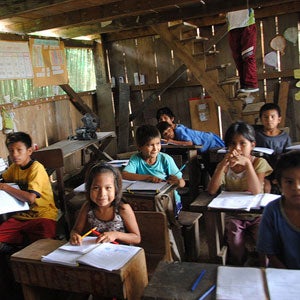4.7 billion people - 63% of the world's population - are covered by policies such as strong graphic warnings, smoke-free public places or other measures
19 July 2017 ¦ Geneva/New York: The latest WHO report on the global tobacco epidemic published today finds that more countries have implemented tobacco control policies, ranging from graphic pack warnings and advertising bans to no-smoking areas. About 4.7 billion people - 63% of the world's population - are covered by at least one comprehensive tobacco control measure, which has quadrupled since 2007 when only 1 billion people and 15% of the world's population, were covered. Strategies to implement such policies have saved millions of people from an early death.

However, the tobacco industry continues to hamper government efforts to fully implement life- and cost-saving interventions, according to the new WHO report on the global tobacco epidemic, 2017.
"Governments around the world must waste no time in incorporating all the provisions of the WHO Framework Convention on Tobacco Control into their national tobacco control programs and policies," says Dr. Tedros Adhanom Ghebreyesus, WHO Director-General. "They must also clamp down on the illicit tobacco trade, which is exacerbating the global tobacco epidemic and its related health and socio-economic consequences."
Dr Tedros adds: "Working together, countries can prevent millions of people from dying each year from preventable tobacco-related illness, and save billions of dollars a year in avoidable health-care expenditures and productivity losses."
Today, 4.7 billion people are protected by at least one "best practice" tobacco control measure from the WHO Framework Convention on Tobacco Control (WHO FCTC), 3.6 billion more than in 2007, according to the report. This progress has been made possible because governments have intensified action to implement key measures of the WHO FCTC.
In the Americas
Twenty-one of 35 countries in the Americas have implemented at least one comprehensive tobacco control measure, which means that almost one billion people (95% of the Region's population) benefit from anti-tobacco initiatives. At least 15 countries in the Americas have implemented two such measures, protecting 59% of the population against tobacco use.
The measure most widely adopted by the countries of the Region has been the implementation of smoke-free environments, benefitting almost 500 million people in 18 countries (48.7% of the population). The second most widespread measure in the Region is to include images on tobacco packaging with warnings against tobacco use. This has been implemented in 16 countries, covering 55% of the population of the Americas.
There are an estimated 69 million smokers in Latin America and the Caribbean, representing 6% of all smokers worldwide. About 68% (47 million) smokers are men and 32% (22 million) are women. The Americas is second only to Europe among WHO regions in terms of the relative prevalence of women who smoke. The prevalence of tobacco use in the Region of the Americas has been declining in recent years.
Strategies
Strategies to support the implementation of tobacco demand reduction measures in the WHO FCTC, like the "MPOWER" measures, have saved millions of people from an early death, as well as hundreds of billions of dollars in the past decade. MPOWER was established in 2008 to promote government action on six tobacco control strategies in line with the WHO FCTC to:
- Monitor tobacco use and prevention policies;
- Protect people from tobacco smoke;
- Offer help to quit tobacco use;
- Warn people about the dangers of tobacco;
- Enforce bans on tobacco advertising, promotion and sponsorship; and
- Raise taxes on tobacco.
"One in ten deaths around the world is caused by tobacco, but we can change that through MPOWER tobacco control measures, which have proven highly effective," says Michael R. Bloomberg, WHO Global Ambassador for Noncommunicable Diseases and founder of Bloomberg Philanthropies.
"The progress that's been made worldwide - and documented throughout this report - shows that it is possible for countries to turn the tide. Bloomberg Philanthropies looks forward to working with Director-General Ghebreyesus and continuing our work with the WHO."
The new report, funded by Bloomberg Philanthropies, focuses on monitoring tobacco use and prevention policies. It finds one-third of countries have comprehensive systems to monitor tobacco use. While this is up from one-quarter of countries monitoring tobacco use at recommended levels in 2007, governments still need to do more to prioritize or finance this area of work.
Even countries with limited resources can monitor tobacco use and implement prevention policies. By generating data on youth and adults, countries can, in turn, promote health, save healthcare costs and generate revenues for government services, the report finds. It adds that systematic monitoring of tobacco industry interference in government policymaking protects public health by shedding light on tobacco industry tactics. These include exaggerating the economic importance of the tobacco industry, discrediting proven science and using litigation to intimidate governments.
"Countries can better protect their citizens, including children, from the tobacco industry and its products when they use tobacco monitoring systems," says Dr Douglas Bettcher, director of WHO's department for the prevention of noncommunicable diseases (NCDs).
"Tobacco industry interference in government policymaking represents a deadly barrier to advancing health and development in many countries," says Dr Bettcher. "But by monitoring and blocking such activities, we can save lives and sow the seeds for a sustainable future for all."
Other key findings from the WHO Report on the global tobacco epidemic 2017 include:
- 43% of the world's population (3.2 billion people) are covered by two or more MPOWER measures at the highest level, nearly seven times the number since 2007;
- Eight countries, including five low- and middle-income, have implemented four or more MPOWER measures at the highest level (Brazil, Islamic Republic of Iran, Ireland, Madagascar, Malta, Panama, Turkey and the United Kingdom of Great Britain and Northern Ireland);
- Monitoring: Nepal, India and the Philippines are among countries that conducted WHO-backed initiatives to monitor tobacco use and then implemented measures to protect people from tobacco.
- Nepal introduced the world's largest health warnings on tobacco packaging surfaces (covering 90% of the package) in May 2015 after using a set of household tobacco survey questions that allowed authorities to detect a high prevalence of adult male smokers and users of smokeless products;
- India launched a nationwide tobacco cessation program and toll-free quitline in 2016 after conducting a "global adult tobacco survey" in 2009-10 that revealed high interest among almost one in two smokers and users of smokeless products to quit eventually;
- The Philippines' landmark Sin Tax Reform Law was passed in 2012 after its 2009 global adult tobacco survey showed high smoking rates among men (47.4%) and boys (12.9%). Such strong tobacco demand reduction measures have contributed to declining tobacco use, according to its 2015 adult tobacco survey results.
- Protect: Comprehensive smoke-free legislation is currently in place for almost 1.5 billion people in 55 countries. Since 2007, dramatic progress has been witnessed in low- and middle-income countries, 35 of which have adopted a complete smoke-free law since 2007.
- Offer: Appropriate cessation treatment is in place for 2.4 billion people in 26 countries;
- Warn: More people are protected by strong graphic pack warnings than by any other MPOWER measure, covering almost 3.5 billion people in 78 countries - almost half the global population (47%);
- Warn: Campaigns: 3.2 billion people live in a country that aired at least one comprehensive national anti-tobacco mass media campaign in the last two years;
- Enforce: Bans on tobacco advertising, promotion and sponsorship interfere with the tobacco industry's ability to promote and sell its products, and reduce tobacco use. But only 15% of the world's population is currently covered by a comprehensive ban;
- Raise: Raising taxes to increase tobacco product prices is the most effective and cost-effective means to reduce tobacco use and encourage users to quit. But it is one of the least used tobacco control measures.
Note for Editors:
Tobacco use is the leading single preventable cause of death worldwide, killing over 7 million people each year. Its economic costs are also enormous, totaling more than US$1.4 trillion in healthcare costs and lost productivity.
The WHO report on the global tobacco epidemic will be launched on 19 July 2017 on the sidelines of the UN High-level political forum on sustainable development in New York.
Controlling tobacco use is a key part of the 2030 Agenda for Sustainable Development. The Agenda includes targets to strengthen national implementation of the WHO FCTC and a one-third reduction in premature deaths from NCDs, including heart and lung diseases, cancer and diabetes. Tobacco use is a leading common risk factor for NCDs, which kill 40 million people each year, equivalent to 70% of all deaths globally, including 15 million people aged between 30 and 69. Over 80% of these "premature" deaths occur in low- and middle-income countries.
Related links
- Report: Monitoring tobacco use and prevention policies pdf, 5mb
- More about the global report, technical background information
- Infographics on tobacco control and monitoring
- WHO's work on tobacco control
Media contacts:
Paul Garwood
Communications Officer
Telephone: +41 22 791 1578
Mobile: +41 796 037 294
E-mail: garwoodp@who.int
Tarik Jašarevi?
Communications Officer
Telephone : +41 22 791 5099
Mobile: +41 793 676 214
E-mail: jasarevict@who.int



